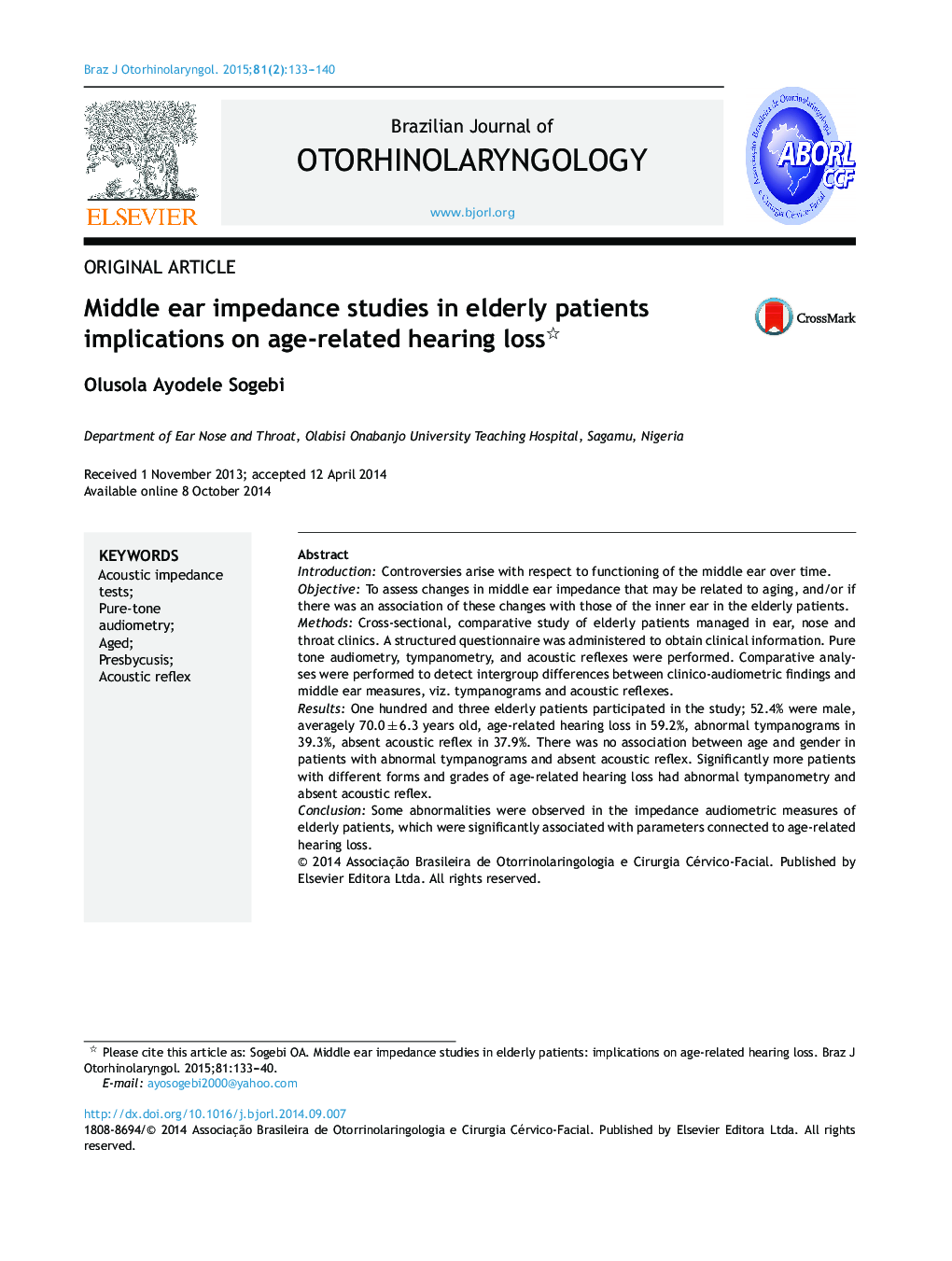| Article ID | Journal | Published Year | Pages | File Type |
|---|---|---|---|---|
| 4106144 | Brazilian Journal of Otorhinolaryngology | 2015 | 8 Pages |
IntroductionControversies arise with respect to functioning of the middle ear over time.ObjectiveTo assess changes in middle ear impedance that may be related to aging, and/or if there was an association of these changes with those of the inner ear in the elderly patients.MethodsCross-sectional, comparative study of elderly patients managed in ear, nose and throat clinics. A structured questionnaire was administered to obtain clinical information. Pure tone audiometry, tympanometry, and acoustic reflexes were performed. Comparative analyses were performed to detect intergroup differences between clinico-audiometric findings and middle ear measures, viz. tympanograms and acoustic reflexes.ResultsOne hundred and three elderly patients participated in the study; 52.4% were male, averagely 70.0 ± 6.3 years old, age-related hearing loss in 59.2%, abnormal tympanograms in 39.3%, absent acoustic reflex in 37.9%. There was no association between age and gender in patients with abnormal tympanograms and absent acoustic reflex. Significantly more patients with different forms and grades of age-related hearing loss had abnormal tympanometry and absent acoustic reflex.ConclusionSome abnormalities were observed in the impedance audiometric measures of elderly patients, which were significantly associated with parameters connected to age-related hearing loss.
ResumoIntroduçãoExistem controvérsias no que se refere às alterações funcionais da orelha média com o passar dos anos.ObjetivoAvaliar as mudanças na impedância da orelha média que podem estar relacionadas ao envelhecimento, bem como qualquer associação dessas alterações com as que ocorrem na orelha interna.MétodoEstudo prospectivo comparativo de pacientes idosos atendidos em ambulatórios especializados em otorrinolaringologia e aplicação de questionário estruturado para obtenção de informações clínicas. Foram realizadas audiometria de tons puros, timpanometria e reflexos acústicos e análise comparativa para detectar as diferenças intergrupos entre os achados clínico-audiométricos.ResultadosParticiparam do estudo 103 pacientes idosos: 52,4% do gênero masculino; idade de 70 ± 63 anos; perda auditiva relacionada à idade detectada em 59,2%; timpanograma anormal em 39,3%; e reflexo acústico ausente em 37,9%. Não foi encontrada associação entre idade e gênero em pacientes com timpanograma anormal e reflexo acústico ausente. Um número significantemente maior de pacientes com diferentes graus e configurações de perda auditiva relacionada à idade apresentou timpanometria anormal e reflexo acústico ausente.ConclusãoAlgumas anormalidades foram observadas em medidas de impedância audiométrica em pacientes idosos, que foram significantemente associados com os parâmetros ligados à perda auditiva relacionada à idade.
